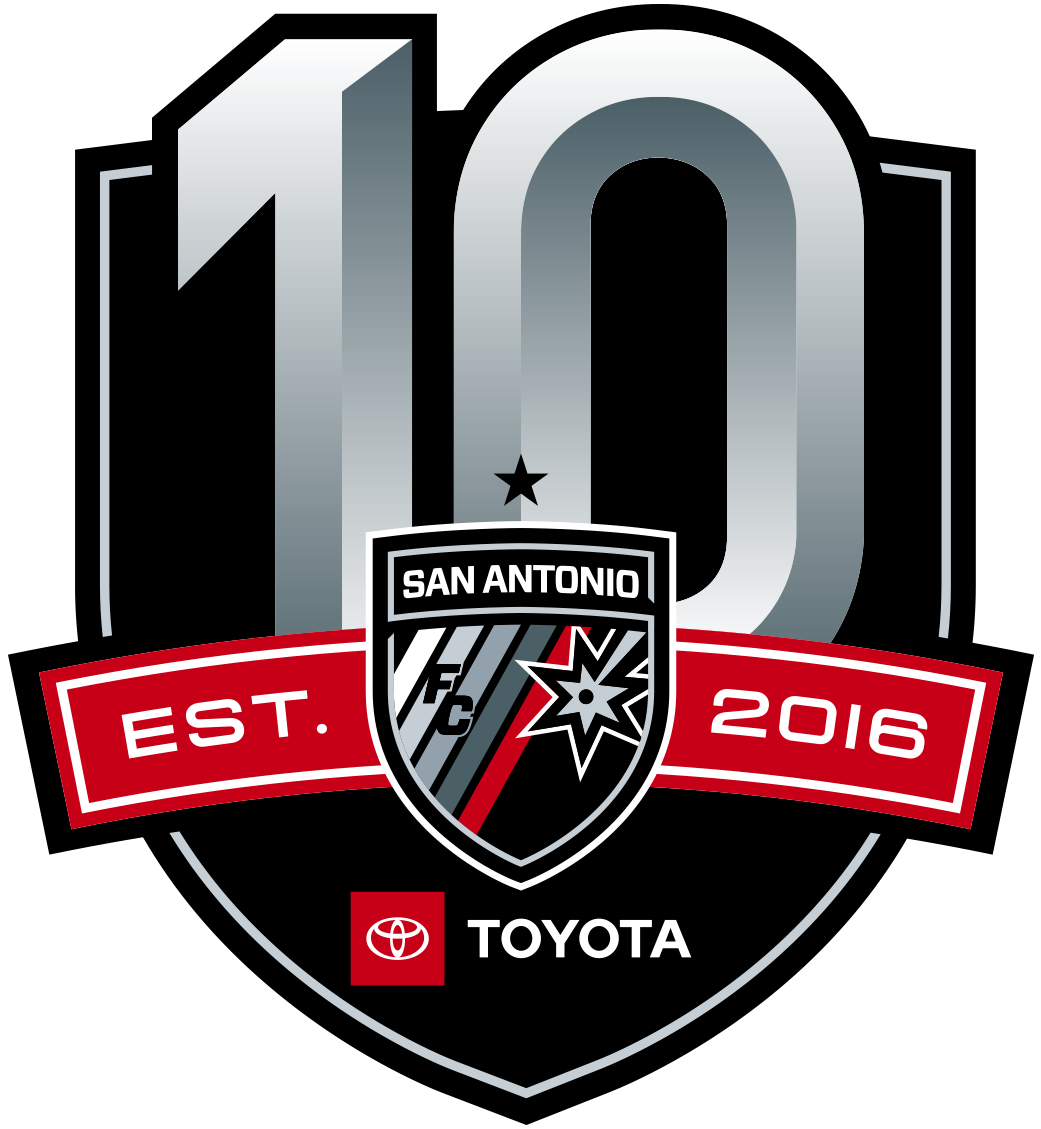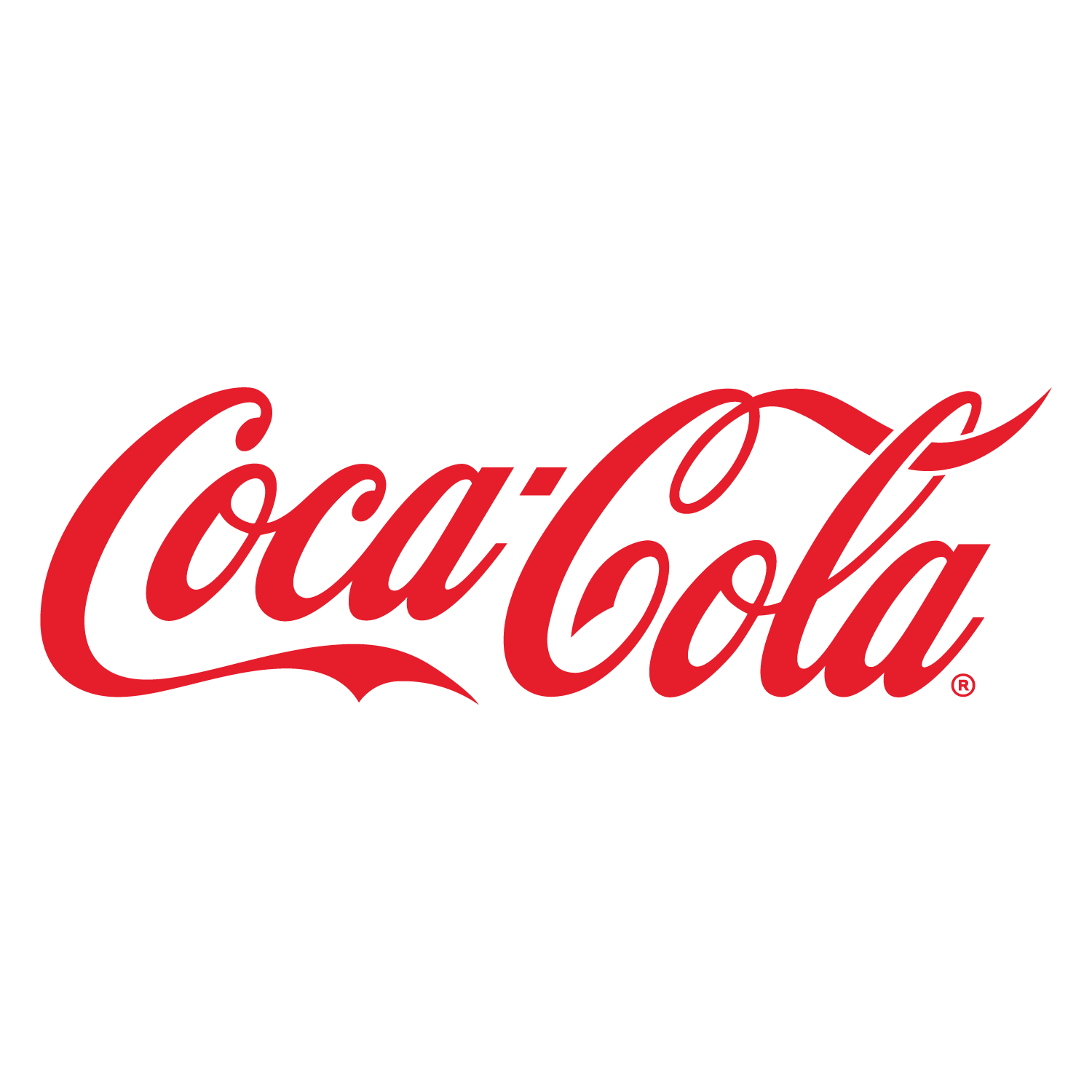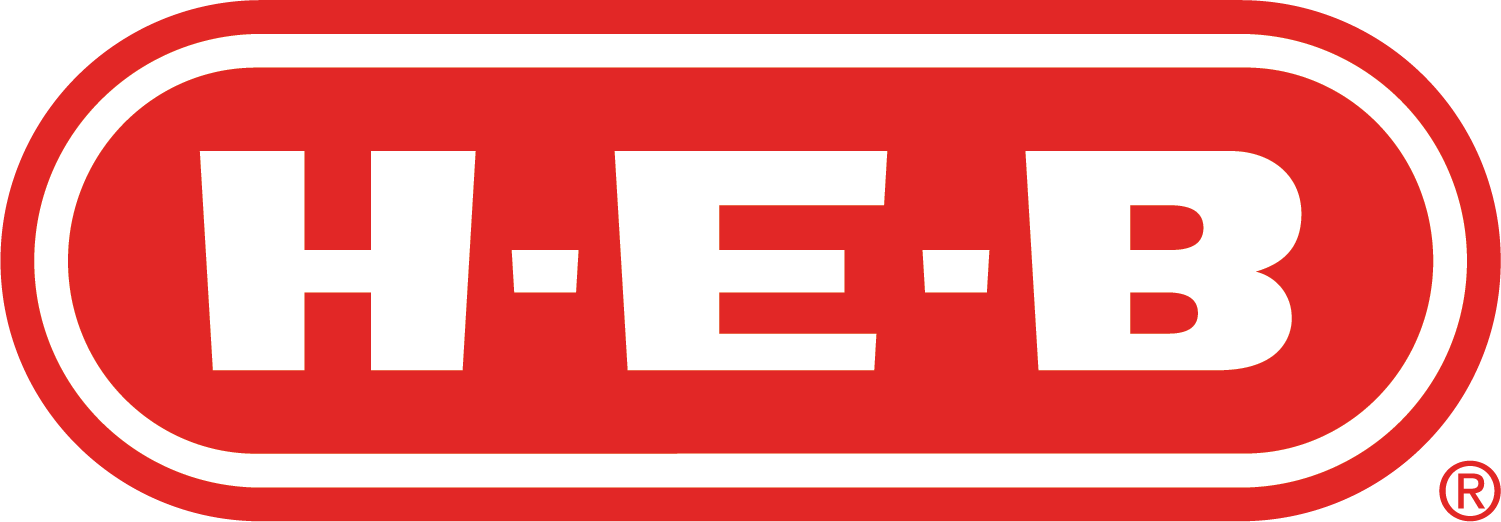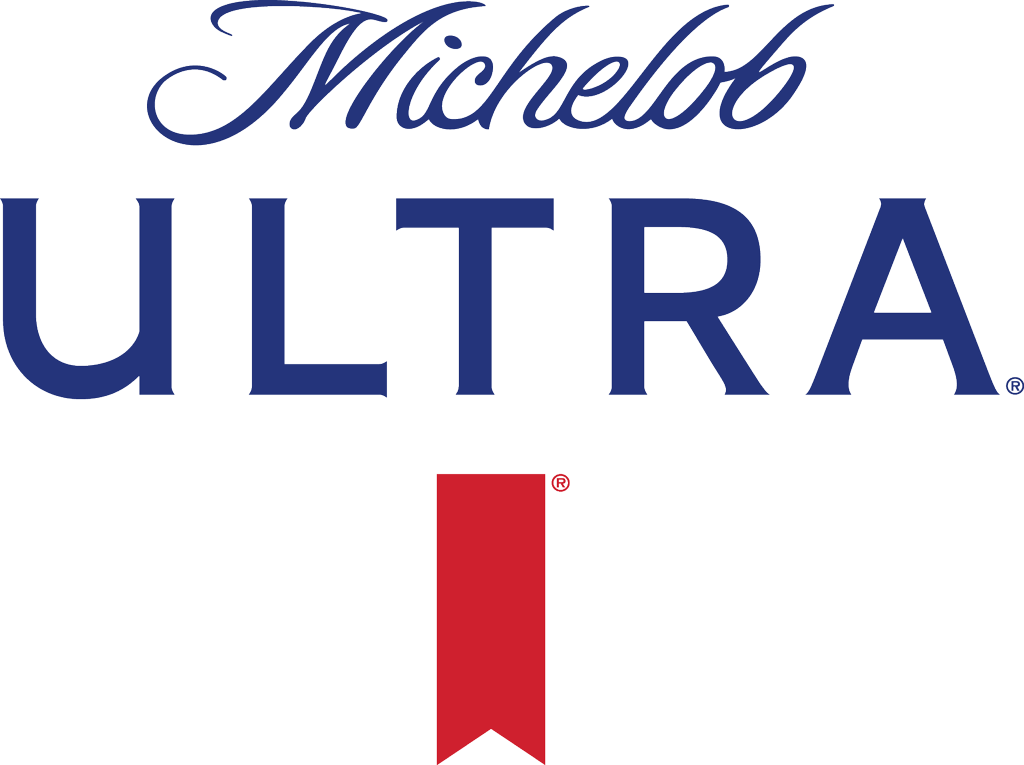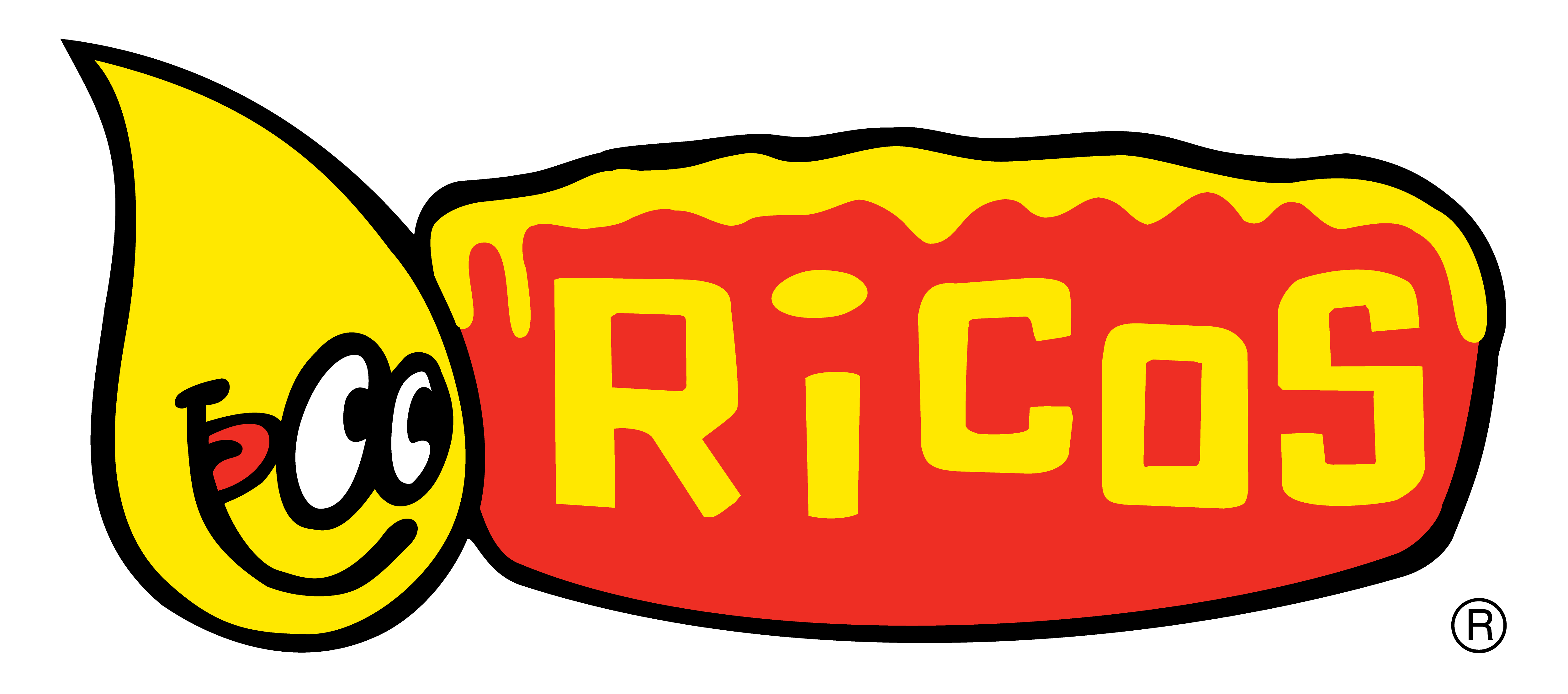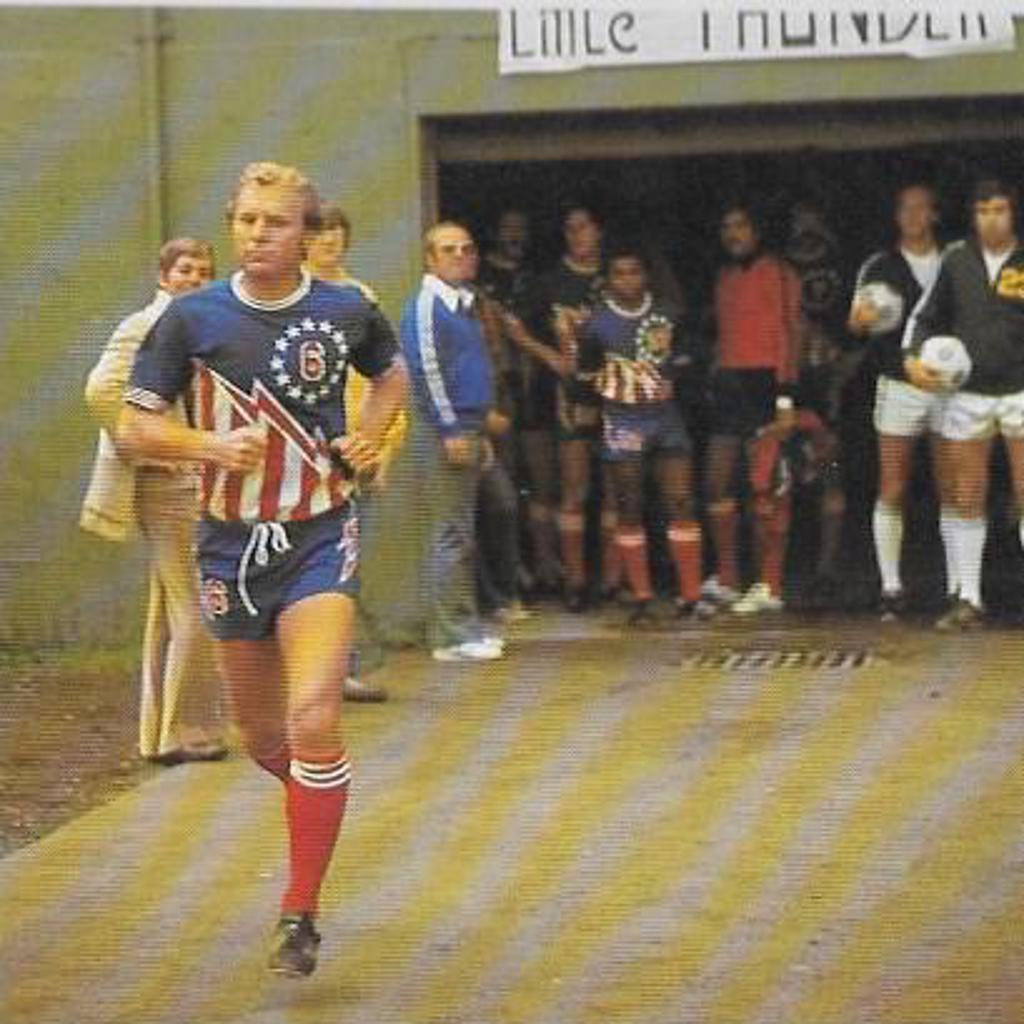
For a short period of time in the 1970's the North American Soccer League (NASL) gathered an extraordinary collection of some of the world's most famous soccer players. Pele, Beckenbauer, Cruyff, Eusebio, Best, etc. are examples of world class talent who played for multiple years in North America. Texas NASL teams took a different approach. Many solid veterans comprised rosters, but European stars and their large salaries were rare. San Antonio Thunder defender Bobby Moore was one of those stars.
Heading into the second season, San Antonio Thunder owner Ward Lay knew that he had to increase the star power of his team. 1975 attendance did not live up to expectations, thus the need for a refreshed roster. Lay and Coach Don Batie's efforts produced somebody who fit that role, world-class English defender Moore. In my estimation he is the best, most recognized soccer player to suit up for a Texas team.
For a short period of time in the 1970’s the North American Soccer League (NASL) gathered an extraordinary collection of some of the world’s most famous soccer players. Pele, Beckenbauer, Cruyff, Eusebio, Best, etc. are examples of world class talent who played for multiple years in North America. Texas NASL teams took a different approach. Many solid veterans comprised rosters, but European stars and their large salaries were rare. San Antonio Thunder defender Bobby Moore was one of those stars.
Heading into the second season, San Antonio Thunder owner Ward Lay knew that he had to increase the star power of his team. 1975 attendance did not live up to expectations, thus the need for a refreshed roster. Lay and Coach Don Batie’s efforts produced somebody who fit that role, world-class English defender Moore. In my estimation he is the best, most recognized soccer player to suit up for a Texas team.
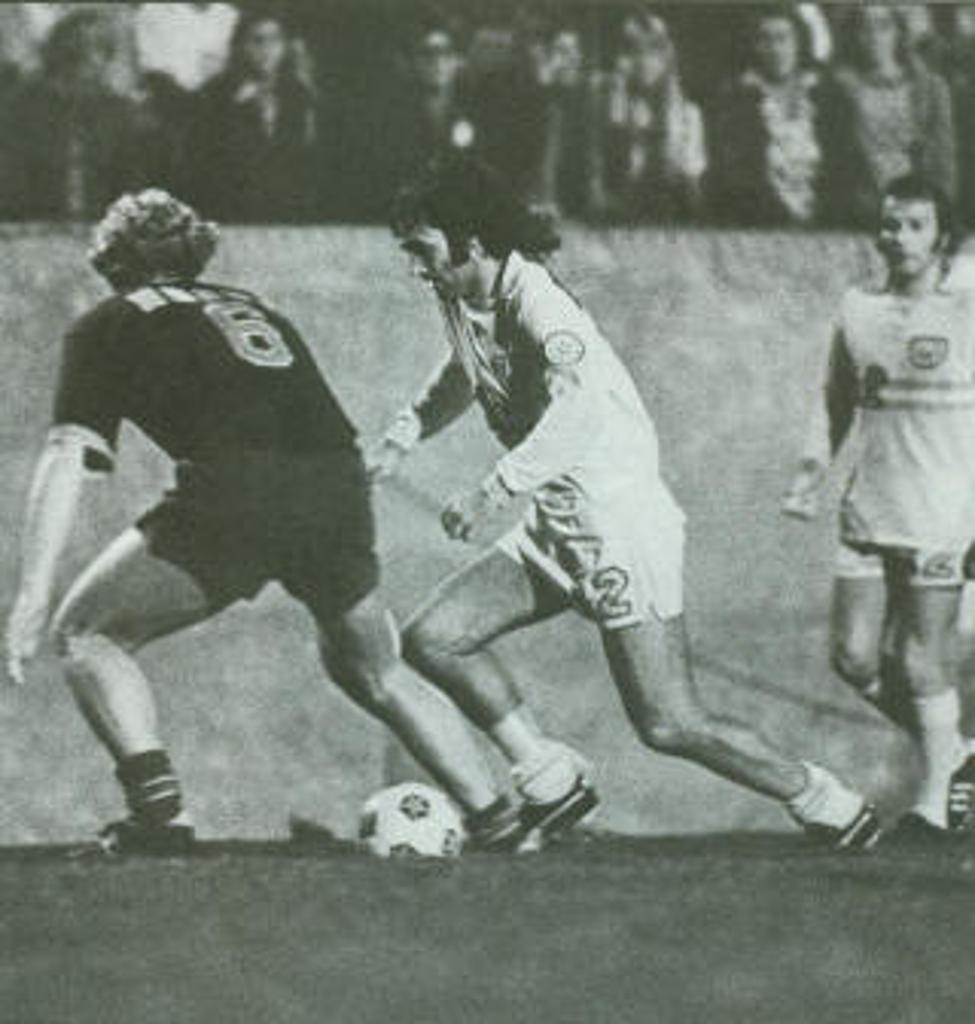
Before Moore signed, Ward Lay first attempted to bring George Best to San Antonio instead. Best, known as much for his off the field activities as on, is still recognized as one of the world's best soccer players. In the 1960's and early 1970's, the Northern Ireland international forward scored 137 goals at Manchester United. After a falling out with United's manager in 1974, Best had brief spells elsewhere before he decided to join the NASL.
George Best coming to 1976 San Antonio was not meant to be. According to Batie, Best did not show for two separate meetings in England to negotiate a contract. Before the Thunder played the Los Angeles Aztecs, the club Best eventually joined, he admitted that San Antonio never really stood a chance because singer Elton John wanted him to come to play in LA. That city was a better fit for his lifestyle anyway.
Thunder Coaching Staff Heads to Great Britain
Batie traveled to England and Scotland after the 1975 season ended to recruit players for the 1976 squad. In a recent interview, he commented that he first saw Moore play in an Anglo-Scottish Cup semifinal match in Motherwell. Lacking local contacts, Batie had retained Bobby Calder-a legendary Scottish scout-to help the Thunder sign players.
Batie did not ask for briefings from Calder before evaluating the players and teams he saw play. As a result, he did not know Moore was part of the team playing Motherwell that day. Batie shared his memories of seeing Moore for the first time. "The game started, and I was immediately drawn to one player, Fulham’s #6. I had never seen a player play the game so easily, who was so much in control, and so much ahead of the game." Batie continued, "I said to Bobby Calder; that’s the player we need. That’s the player we can build a team around. Calder just laughed and said, 'Don’t you know who that is? That’s Bobby Moore. You will never sign Bobby Moore." Batie mentioned that this would become an inside joke between them as players Calder told him he would never sign eventually joined the 1976 Thunder.
Batie's Initial Trip to London to Meet with Fulham
Calder then arranged for Batie to meet Fulham's manager Alec Stock in London to discuss whether Moore was available to come to San Antonio on loan. When he arrived for the meeting, he was told that Stock was aware of the meeting but was at a youth game and would be back shortly.
Since the office was closing, he was asked to wait outside for a few minutes until Stock returned. Batie said he waited for hours outside the office under cover in the rain until Stock, who had forgotten about the meeting, returned. Extremely apologetic, he invited Batie into his office. He then spent the next few hours sharing stories about his career experiences, Bobby Moore, and English soccer in general. After that meeting a lunch with Moore and his wife was arranged at Batie's hotel for a few days later. Batie sold San Antonio and his vision for the Thunder and Moore agreed that he was interested in joining the club for the summer.
Closing the Deal with Fulham was Challenging
All seemed to be heading in the right direction, but unfortunately, there was one stumbling block. A key director at Fulham, Eric Miller, was opposed to Moore going to the United States. Both Batie and Lay made separate, bizarre trips to London in early 1976 to complete negotiations with Miller. Batie tells the story of joining Moore and Miller in a hotel suite for dinner. When he walked in the door the first thing Miller said to Batie, who had never met the man, was 'I hate Americans and I hate you.' Miller then went on to say that the only things he liked about America were jazz musician Count Basie and Cadillacs. The meeting went downhill from there, Moore apologized afterwards and Batie returned to San Antonio believing the deal was dead.
Multiple Trips to England Needed to Acquire Moore
Moore eventually convinced Fulham to let him go, but Ward Lay needed to travel to London to close the deal with the obstinate Miller. After a marathon overnight session an agreement was reached. In a San Antonio Light interview, Lay noted that Miller apparently had him followed prior to the meeting. "This Miller is incredible man. He knew every move I made from the time I left New York to London. He either followed me or had me followed, just to observe me."
The Thunder finalized an agreement that made Moore the club's highest paid player shortly before the season began. Lay mentioned in the Light interview that Moore also received an oil well, new car and an apartment on a golf course. Batie told me he does not remember any of this happening, but thought it made for a good story.
Bobby Moore Made a Significant Impact on the Thunder and the NASL
Before Moore signed, Ward Lay first attempted to bring George Best to San Antonio instead. Best, known as much for his off the field activities as on, is still recognized as one of the world’s best soccer players. In the 1960’s and early 1970’s, the Northern Ireland international forward scored 137 goals at Manchester United. After a falling out with United’s manager in 1974, Best had brief spells elsewhere before he decided to join the NASL.
George Best coming to 1976 San Antonio was not meant to be. According to Batie, Best did not show for two separate meetings in England to negotiate a contract. Before the Thunder played the Los Angeles Aztecs, the club Best eventually joined, he admitted that San Antonio never really stood a chance because singer Elton John wanted him to come to play in LA. That city was a better fit for his lifestyle anyway.
Thunder Coaching Staff Heads to Great Britain
Batie traveled to England and Scotland after the 1975 season ended to recruit players for the 1976 squad. In a recent interview, he commented that he first saw Moore play in an Anglo-Scottish Cup semifinal match in Motherwell. Lacking local contacts, Batie had retained Bobby Calder-a legendary Scottish scout-to help the Thunder sign players.
Batie did not ask for briefings from Calder before evaluating the players and teams he saw play. As a result, he did not know Moore was part of the team playing Motherwell that day. Batie shared his memories of seeing Moore for the first time. “The game started, and I was immediately drawn to one player, Fulham’s #6. I had never seen a player play the game so easily, who was so much in control, and so much ahead of the game.” Batie continued, “I said to Bobby Calder; that’s the player we need. That’s the player we can build a team around. Calder just laughed and said, ‘Don’t you know who that is? That’s Bobby Moore. You will never sign Bobby Moore.” Batie mentioned that this would become an inside joke between them as players Calder told him he would never sign eventually joined the 1976 Thunder.
Batie’s Initial Trip to London to Meet with Fulham
Calder then arranged for Batie to meet Fulham’s manager Alec Stock in London to discuss whether Moore was available to come to San Antonio on loan. When he arrived for the meeting, he was told that Stock was aware of the meeting but was at a youth game and would be back shortly.
Since the office was closing, he was asked to wait outside for a few minutes until Stock returned. Batie said he waited for hours outside the office under cover in the rain until Stock, who had forgotten about the meeting, returned. Extremely apologetic, he invited Batie into his office. He then spent the next few hours sharing stories about his career experiences, Bobby Moore, and English soccer in general. After that meeting a lunch with Moore and his wife was arranged at Batie’s hotel for a few days later. Batie sold San Antonio and his vision for the Thunder and Moore agreed that he was interested in joining the club for the summer.
Closing the Deal with Fulham was Challenging
All seemed to be heading in the right direction, but unfortunately, there was one stumbling block. A key director at Fulham, Eric Miller, was opposed to Moore going to the United States. Both Batie and Lay made separate, bizarre trips to London in early 1976 to complete negotiations with Miller. Batie tells the story of joining Moore and Miller in a hotel suite for dinner. When he walked in the door the first thing Miller said to Batie, who had never met the man, was ‘I hate Americans and I hate you.’ Miller then went on to say that the only things he liked about America were jazz musician Count Basie and Cadillacs. The meeting went downhill from there, Moore apologized afterwards and Batie returned to San Antonio believing the deal was dead.
Multiple Trips to England Needed to Acquire Moore
Moore eventually convinced Fulham to let him go, but Ward Lay needed to travel to London to close the deal with the obstinate Miller. After a marathon overnight session an agreement was reached. In a San Antonio Light interview, Lay noted that Miller apparently had him followed prior to the meeting. “This Miller is incredible man. He knew every move I made from the time I left New York to London. He either followed me or had me followed, just to observe me.”
The Thunder finalized an agreement that made Moore the club’s highest paid player shortly before the season began. Lay mentioned in the Light interview that Moore also received an oil well, new car and an apartment on a golf course. Batie told me he does not remember any of this happening, but thought it made for a good story.
Bobby Moore Made a Significant Impact on the Thunder and the NASL
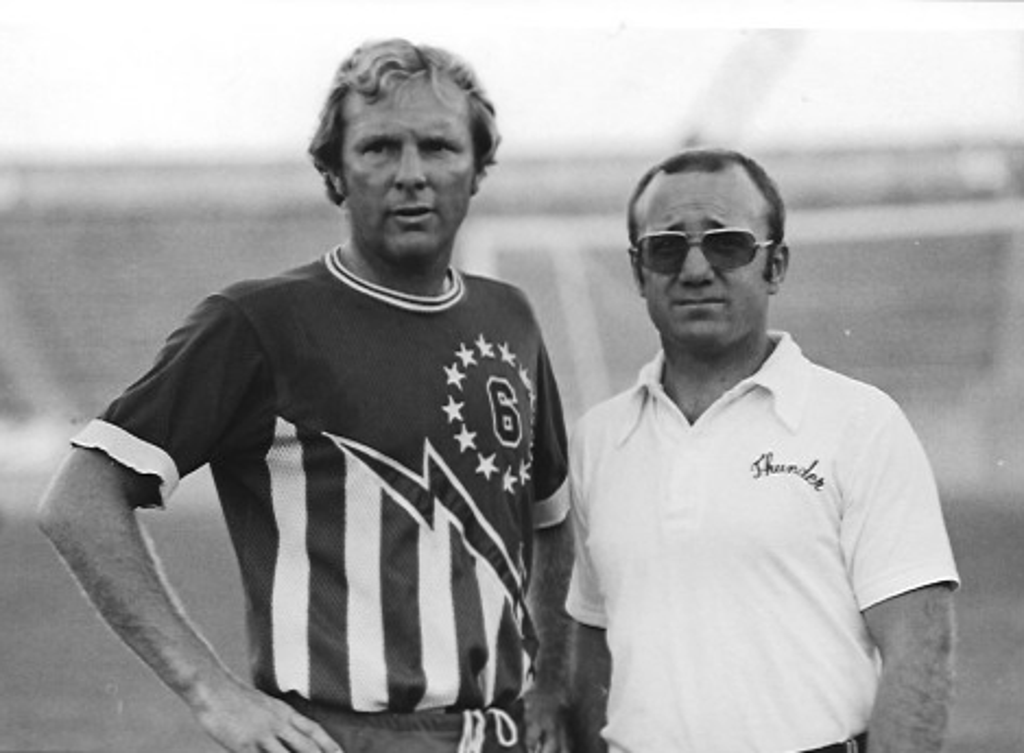
High paid international players near the end of their careers coming to the U.S. to retire while playing is a common stereotype. This was rarer in the NASL because the league was rife with players who brought their historical rivalries across the Atlantic. Bobby Moore's competitive fire with the Thunder was no different in San Antonio. He was the only Thunder player who played in all 24 matches and averaged 87 minutes per game over the course of the season. Moore also actively joined in community activities. Local school soccer clinics, civic speaking engagements and charitable work with the Muscular Dystrophy Association are examples.
Batie Considered Moore to be a Mentor
Batie fondly remembers Moore's contributions and considered him to be a mentor.
"I have nothing but positive thoughts about Bobby. He still had legs and could play. He was a great team leader and one of the best locker room guys I have ever had. Cannot say enough about him." Batie also shared how he made it a point to sit next to Moore on all of the road trip plane flights and spent most of the time talking soccer “I probably learned more soccer from Bobby Moore than anybody else ever. He was a world of knowledge.”
He shared one specific play that highlighted the contributions Moore made to the club. In a midseason home match, the Thunder earned a corner kick five seconds before halftime. The ball was kicked back near midfield and Moore was the only one who reacted. Picking up the ball, he ran straight to the corner, played the ball in and the Thunder scored.
Batie said this was only one example of the key trait that separated Moore from others on the field. “Bobby could see one, two or three plays ahead on every play. He knew where the ball was going, and he would be there waiting for it to get there before anybody else would ever anticipate that. He was that smart as a player and knew the game that well.”
Moore Helped Support Young American Players
Young American left back Mark Stahl spent the majority of the 1976 season playing next to Moore, who held down the sweeper position in the center of the defense. He discussed his mentoring relationship with Moore.
"He kind of took me under his wing. Once it looked like I would be the regular left back [he opened up to me]. At practices I certainly paid attention when he would tell me to do something."
Stahl also mentioned offense vs. defense practices where Batie and Moore would constantly send pacy Canadian international forward Victor Kodelja directly at him. Moore would provide tips along the way after observing his reactions to these one-on-ones. Stahl also agreed with Batie's observations about Moore's on-field vision.
"He may not have had the speed he did when he was younger, but he had that vision to read the game. You wonder how a person ends up in the right position all the time. That's anticipation and being able to read the play based on experience. Bobby Moore had that."
Representing the United States in the 1976 Bicentennial Cup
High paid international players near the end of their careers coming to the U.S. to retire while playing is a common stereotype. This was rarer in the NASL because the league was rife with players who brought their historical rivalries across the Atlantic. Bobby Moore’s competitive fire with the Thunder was no different in San Antonio. He was the only Thunder player who played in all 24 matches and averaged 87 minutes per game over the course of the season. Moore also actively joined in community activities. Local school soccer clinics, civic speaking engagements and charitable work with the Muscular Dystrophy Association are examples.
Batie Considered Moore to be a Mentor
Batie fondly remembers Moore’s contributions and considered him to be a mentor.
“I have nothing but positive thoughts about Bobby. He still had legs and could play. He was a great team leader and one of the best locker room guys I have ever had. Cannot say enough about him.” Batie also shared how he made it a point to sit next to Moore on all of the road trip plane flights and spent most of the time talking soccer “I probably learned more soccer from Bobby Moore than anybody else ever. He was a world of knowledge.”
He shared one specific play that highlighted the contributions Moore made to the club. In a midseason home match, the Thunder earned a corner kick five seconds before halftime. The ball was kicked back near midfield and Moore was the only one who reacted. Picking up the ball, he ran straight to the corner, played the ball in and the Thunder scored.
Batie said this was only one example of the key trait that separated Moore from others on the field. “Bobby could see one, two or three plays ahead on every play. He knew where the ball was going, and he would be there waiting for it to get there before anybody else would ever anticipate that. He was that smart as a player and knew the game that well.”
Moore Helped Support Young American Players
Young American left back Mark Stahl spent the majority of the 1976 season playing next to Moore, who held down the sweeper position in the center of the defense. He discussed his mentoring relationship with Moore.
“He kind of took me under his wing. Once it looked like I would be the regular left back [he opened up to me]. At practices I certainly paid attention when he would tell me to do something.”
Stahl also mentioned offense vs. defense practices where Batie and Moore would constantly send pacy Canadian international forward Victor Kodelja directly at him. Moore would provide tips along the way after observing his reactions to these one-on-ones. Stahl also agreed with Batie’s observations about Moore’s on-field vision.
“He may not have had the speed he did when he was younger, but he had that vision to read the game. You wonder how a person ends up in the right position all the time. That’s anticipation and being able to read the play based on experience. Bobby Moore had that.”
Representing the United States in the 1976 Bicentennial Cup
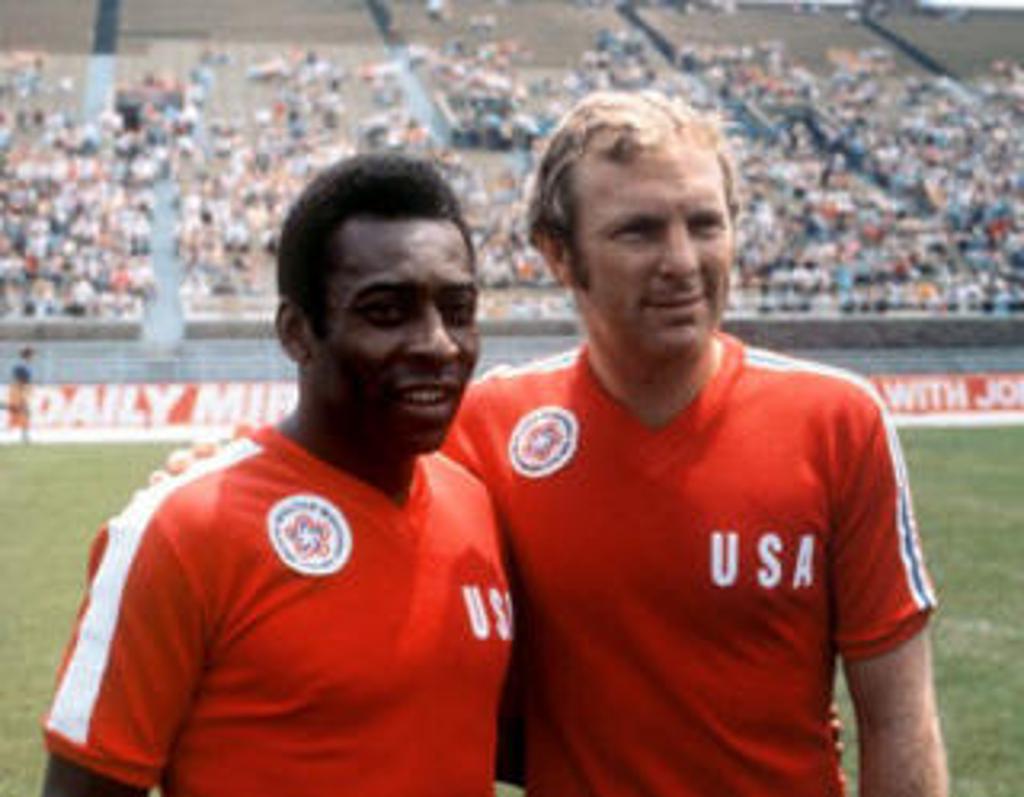
U.S. Soccer organized a tournament in June of 1976 to celebrate the country's 200th birthday. England, Brazil, Italy, and the U.S. team played a series of exhibition matches across the country. Three Thunder players were invited to try out for the squad, but only Moore played in this tournament. Pele also joined the U.S. team, and for the first time, the long- time rivals played on the same squad.
Bobby Moore's Ambitious Goals in the U.S. Never Materialized
From the first day Bobby Moore arrived in San Antonio he had a burning desire to help the sport succeed in the city. His original goal was to end his career in the U.S. and possibly pursue a coaching path. The Thunder finished the 1976 season one-point out of a playoff position, and nobody was more disappointed than Moore. In the final game the Thunder would play in San Antonio, Moore led the team to one of the best performances the team produced. Batie learned later that evening that Moore played while knowing his father had suffered a life-threatening stroke earlier in the day. He noted that Moore was the consummate team player and would not think about bringing personal challenges into the locker room before this pivotal match.
Under the Radar in San Antonio
Batie said he wanted to bring Moore back as a player-coach if the team had returned to San Antonio for the 1977 season, noting “Not sure that Bobby was ever appreciated by some of his teammates as much as I appreciated him…as much as he should have been.”
Thunder Scottish goalkeeper Bobby Clark discussed Moore’s future as a coach in David Tossell’s book-Playing for Uncle Sam. “Don [Batie] had been a college coach and now he was handling all the pros and he gave Bobby a lot of responsibility. Clark continued “Bobby had a nice way and a nice manner and was very calm. I thought he would have done well as a coach.” He also discussed Moore’s uncanny ability to hit a 40-or-50-yard ball right on to somebody’s foot, something also raved about by Mark Stahl.
I believe the same lack of appreciation for Moore can be said for San Antonio too. Reading through old newspaper archives, it is surprising how little coverage he received while he was there. The cartoon below was one of the few examples where the press acknowledged how special a player he was at the time.
Moore later returned to the U.S. for two seasons in Seattle and Charlotte. Batie said he last saw Moore when he was part of a delegation attending a U.S. Youth International game in Santa Clara, CA in the 1980's. Moore, who was a cancer survivor, succumbed to a different form of cancer in 1993 at the age of 51. The youngest from the England 1966 World Cup winners to pass, Bobby Moore is still idolized in England.
Bobby Moore is the Most Famous Soccer Player to Play for a Texas Team
U.S. Soccer organized a tournament in June of 1976 to celebrate the country’s 200th birthday. England, Brazil, Italy, and the U.S. team played a series of exhibition matches across the country. Three Thunder players were invited to try out for the squad, but only Moore played in this tournament. Pele also joined the U.S. team, and for the first time, the long- time rivals played on the same squad.
Bobby Moore’s Ambitious Goals in the U.S. Never Materialized
From the first day Bobby Moore arrived in San Antonio he had a burning desire to help the sport succeed in the city. His original goal was to end his career in the U.S. and possibly pursue a coaching path. The Thunder finished the 1976 season one-point out of a playoff position, and nobody was more disappointed than Moore. In the final game the Thunder would play in San Antonio, Moore led the team to one of the best performances the team produced. Batie learned later that evening that Moore played while knowing his father had suffered a life-threatening stroke earlier in the day. He noted that Moore was the consummate team player and would not think about bringing personal challenges into the locker room before this pivotal match.
Under the Radar in San Antonio
Batie said he wanted to bring Moore back as a player-coach if the team had returned to San Antonio for the 1977 season, noting “Not sure that Bobby was ever appreciated by some of his teammates as much as I appreciated him…as much as he should have been.”
Thunder Scottish goalkeeper Bobby Clark discussed Moore’s future as a coach in David Tossell’s book-Playing for Uncle Sam. “Don [Batie] had been a college coach and now he was handling all the pros and he gave Bobby a lot of responsibility. Clark continued “Bobby had a nice way and a nice manner and was very calm. I thought he would have done well as a coach.” He also discussed Moore’s uncanny ability to hit a 40-or-50-yard ball right on to somebody’s foot, something also raved about by Mark Stahl.
I believe the same lack of appreciation for Moore can be said for San Antonio too. Reading through old newspaper archives, it is surprising how little coverage he received while he was there. The cartoon below was one of the few examples where the press acknowledged how special a player he was at the time.
Moore later returned to the U.S. for two seasons in Seattle and Charlotte. Batie said he last saw Moore when he was part of a delegation attending a U.S. Youth International game in Santa Clara, CA in the 1980’s. Moore, who was a cancer survivor, succumbed to a different form of cancer in 1993 at the age of 51. The youngest from the England 1966 World Cup winners to pass, Bobby Moore is still idolized in England.
Bobby Moore is the Most Famous Soccer Player to Play for a Texas Team
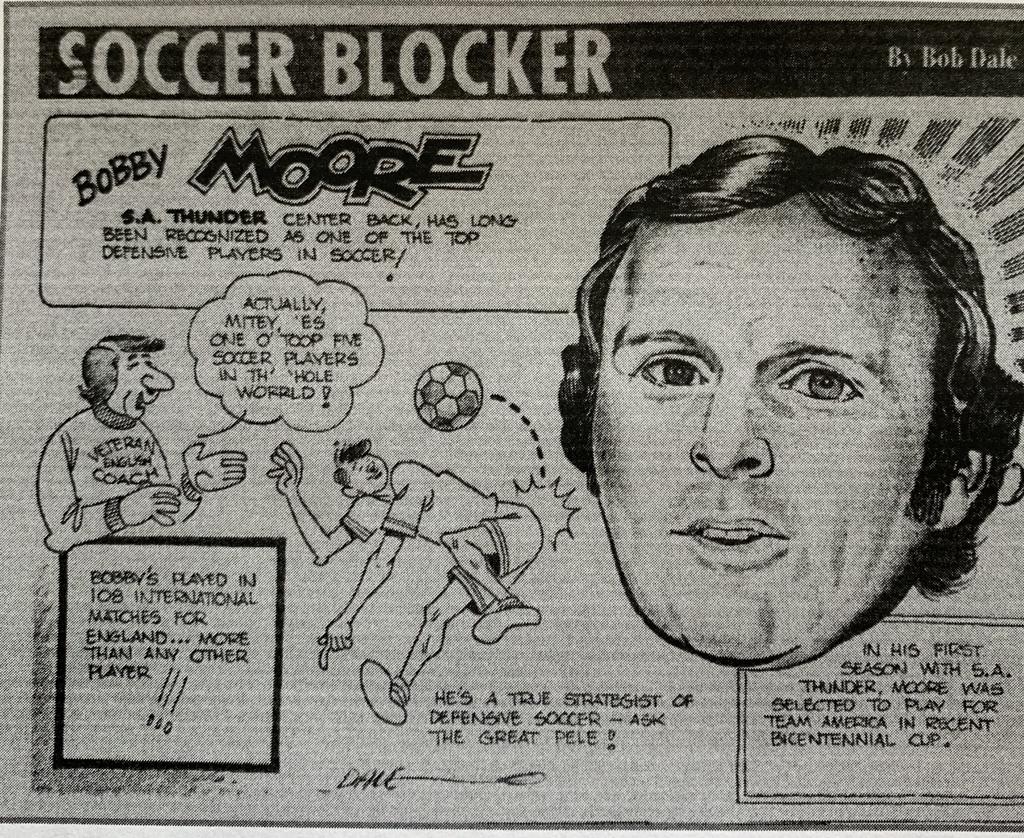
Bobby Moore is my answer to the question of who the best soccer player to play on a Texas professional team is, though this opinion is not straight forward. A case can also be made for Mexican star Hugo Sanchez, who played for the Dallas Burn in their inaugural 1996 season. Sanchez was a legendary forward at Atletico and Real Madrid, scoring more than 200 goals over a 12-year career in Spain. He also tallied 29 times in 58 international appearances for the Mexican National Team.
Moore captained both the England 1966 and 1970 World Cup squads. When he came to San Antonio, he was the most capped international player ever to that point. His battles with Pele were world renowned. Pele said that Moore was the best defender he played against, after they played in the 1970 World Cup. Moore finished second in the European Footballer of the Year award in 1970, no small feat for a defender.
https://www.fifa.com/worldcup/news/remembering-bobby-moore-2017217
In a small way he also has some responsibility for the first national professional soccer leagues in the United States. The final of the 1966 World Cup, which Moore's English side won, was nationally televised here. Positive TV ratings are credited as a key reason for the arrival of professional soccer here the next year.
So, with a nod to Sanchez, in my opinion Moore was the best to play for a Texas soccer team. It is a shame that both only played one season each in Texas.
Sources for this article include: (1) San Antonio Light newspaper archives (sourced online from Genealogy.com) (2) Excellent reference material and images courtesy of Dave Morrison at www.nasljerseys.com (3) Statistical information from Wikipedia sites for Bobby Moore and Hugo Sanchez (4) Playing for Uncle Sam-David Tossell page #100 (5) Don Batie personal collection
Bobby Moore is my answer to the question of who the best soccer player to play on a Texas professional team is, though this opinion is not straight forward. A case can also be made for Mexican star Hugo Sanchez, who played for the Dallas Burn in their inaugural 1996 season. Sanchez was a legendary forward at Atletico and Real Madrid, scoring more than 200 goals over a 12-year career in Spain. He also tallied 29 times in 58 international appearances for the Mexican National Team.
Moore captained both the England 1966 and 1970 World Cup squads. When he came to San Antonio, he was the most capped international player ever to that point. His battles with Pele were world renowned. Pele said that Moore was the best defender he played against, after they played in the 1970 World Cup. Moore finished second in the European Footballer of the Year award in 1970, no small feat for a defender.
https://www.fifa.com/worldcup/news/remembering-bobby-moore-2017217
In a small way he also has some responsibility for the first national professional soccer leagues in the United States. The final of the 1966 World Cup, which Moore’s English side won, was nationally televised here. Positive TV ratings are credited as a key reason for the arrival of professional soccer here the next year.
So, with a nod to Sanchez, in my opinion Moore was the best to play for a Texas soccer team. It is a shame that both only played one season each in Texas.
Sources for this article include: (1) San Antonio Light newspaper archives (sourced online from Genealogy.com) (2) Excellent reference material and images courtesy of Dave Morrison at www.nasljerseys.com (3) Statistical information from Wikipedia sites for Bobby Moore and Hugo Sanchez (4) Playing for Uncle Sam-David Tossell page #100 (5) Don Batie personal collection




























































































































































































































































































